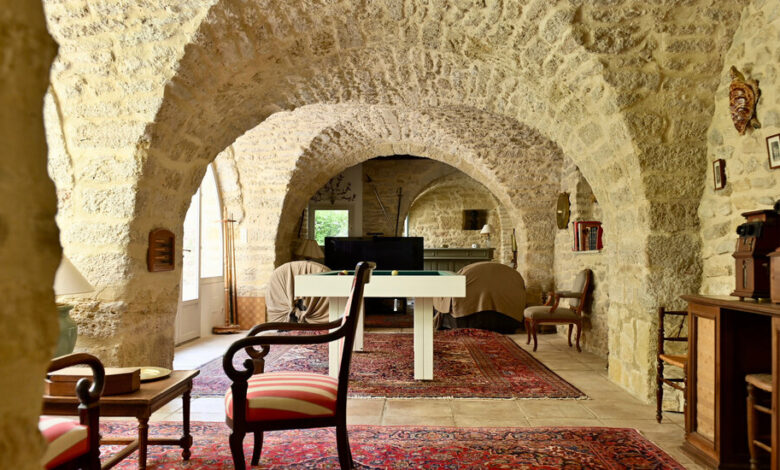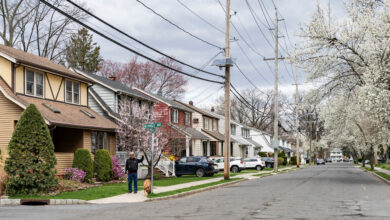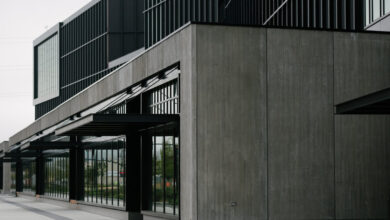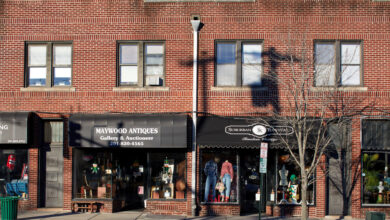House Hunting in France: A Medieval Estate Near Provence for $3 Million

A 13-Bedroom Estate Near the Medieval Town of Uzès
$2.99 MILLION (2.495 MILLION EUROS)
This 13-bedroom home, with a tower erected in the 11th century as a defense station for the Knights Templar military order, is nestled among olive groves and oak truffle trees just outside the medieval town of Uzès, in southern France.
The 5,920-square-foot stone house is anchored by an inner courtyard and surrounded by nearly 47 acres of landscaped gardens, meadows and trees, along with a caretaker’s cottage, a heated swimming pool, a pool house, four enclosed garages and other outbuildings.
Through the years, the house has been used as a convent, an American school and a private home, said Patrick Poncet, CEO and co-founder of Poncet & Poncet Christie’s International Real Estate, which has the listing. Its most recent renovations came in the 1980s, including underfloor heating on the ground level; parts of the house are in need of further restoration.
Cavernous rooms with vaulted stone ceilings form a U-shape on the ground floor. Beyond the barrel-shaped entrance hall, reception rooms have panoramic views of the surrounding countryside and the river that runs along the property’s southern edge. To the left, the updated dining room accommodates a table for 15. A stone fireplace commands one end of the living room, and glass doors beneath an archway open to the grounds. A covered terrace overlooks the river. The kitchen needs to be renovated, said Isabelle Clavie, a senior international real estate consultant at Poncet & Poncet.
To the right of the entrance hall, a den, a billiards room and, two steps up, a compact library overlook the inner courtyard. Terra-cotta tiles and stone slabs typical of French houses cover the floors.
A second tower has a spiral staircase leading upstairs. On the second level, which has parquet floors, the main bedroom has an en suite bath with a tub. Each of seven other large bedrooms has an en suite shower room and sink, but shares the hallway bathrooms. An office and a linen room are also on the second floor. From the courtyard, a straight staircase also leads to the first floor.
Five more compact bedrooms on the third floor, once used by nuns, have en suite showers and sinks. Toilets, which are shared, are off the hallway. The home’s dozen bathrooms need updating, Ms. Clavie said.
A modern sauna and shower occupy the knight’s tower. A stone stairway leads down to the 59-foot-by-20-foot heated swimming pool, where a covered pool pavilion, dug into a rock wall, includes a kitchen and an outdoor living room. Away from the main house, the caretaker’s cottage has two bedrooms, a living room, a kitchen, a bathroom and a private garden.
The property is just over a mile from Uzès, a medieval commune with narrow, circular streets, shops, restaurants, arcades, the First Duchy of France and an annual truffle festival. Marseille and France’s Mediterranean coast are about 90 miles southeast, and the Provence-Alpes-Côte d’Azur region is just to the east. Uzès, though widely included in real estate listings for the region of Provence, is actually in the administrative region of Occitanie, established in 2016 from the former regions of Languedoc-Roussillon (where this house is) and Midi-Pyrénées.
International flights are available at Marseille Provence Airport, about 90 minutes away.
Market Overview
France’s housing market was resilient through the tumult of 2020, even as the economy fell into recession. During the fourth quarter, house prices were up 6.1 percent year over year, with prices for existing homes growing faster (+6.4 percent) than for new homes (+2.8 percent), according to the National Institute for Statistical and Economic Studies.
On April 3, as a new wave of Covid-19 infections battered France, the nation shut down for a third time. Travel was prohibited among regions, with an exception for buyers of primary residences. “This allows us to work almost normally,” Mr. Poncet said.
Second homes, however, make up a significant part of the real estate portfolio in southern France, particularly in Provence-Alpes-Côte d’Azur and Occitanie, where Montpellier and Uzès are the most sought-after locations.
“The climate is mild, the cities and villages offer a very rich architectural heritage, culture in all its forms is omnipresent,” Mr. Poncet said, including a theater festival in Avignon, dance in Montpellier, beaches and nightlife in St. Tropez, and the Cannes Film Festival.
Tim Swannie, director of Home Hunts, which specializes in luxury properties in France, Monaco and Switzerland, said his company’s sales fell by about 20 percent in 2020 after a robust 2019, though interest remained strong. “The south of France generally is not a boom-and-bust property market,” he said. “Most owners see a gradual increase in their property value over time.”
When the first lockdown was lifted last May, “it was like a dam opening its gates — the market was inundated with buyers, all looking to secure properties,” Mr. Swannie said. As buyers from Paris, Monaco and other European cities sought larger homes with more outdoor amenities, “properties were being sold at the asking price, sometimes with several buyers bidding, or being sold before officially being put on the market,” he added. Even properties that had languished “were snapped up with a compromise being made by buyers willing to consider renovating and upgrading homes.”
With foreigners restrained by travel restrictions, domestic buyers filled some of the void. But “foreign demand is rising again in view of the next summer season, in line with the advance of vaccination worldwide,” said Marie-Claire Sangouard, managing director of the Engel & Völkers French Riviera.
Laetitia Hodson, an associate partner at Knight Frank in the international residential department, said the “appetite for a second home in France is very, very high for a home in the country,” with “double the number of new clients and new inquiries.”
Since the start of 2021, “transactions are much closer to the asking price,” Ms. Hodson said, and inventory is low. “Some of the sellers have decided not to sell but to keep their second home,” she added.
In Occitanie, prices start at 450,000 euros ($540,000) for a small pied-à-terre to several million euros for an estate, Mr. Poncet said.
In Provence, a three- or four-bedroom village house with a small garden ranges from 650,000 euros to 1 million euros ($780,000 to $1.2 million). For a home with a garden and a pool in a quiet area, prices begin at 1.5 million euros ($1.8 million) and top 30 million euros ($36 million) for private estates, Mr. Swannie said.
Most buyers look for “character properties” such as “mas,” traditional Provençal stone-built farmhouses “with thick walls and small windows on the south-facing side of the house,” Mr. Swannie said.
Others prefer larger, often better located “Bastides,” homes originally built for nobles. “These houses are more symmetrical in terms of rooms and size,” he said, with bigger windows and better views.
Who Buys in France
Before the pandemic, about 60 percent of buyers in southern France were international, with the majority hailing from Britain, Sweden and the United States, Ms. Hodson said. Now buyers are 60 percent French, with foreign buyers driving from neighboring Belgium, Luxembourg, Holland, Switzerland and Germany.
Across France, nonresident buyers encompass only about 2 percent of real estate transactions, said Amaury de Monclin, managing director and co-founder of Bluesky Finance, a French mortgage broker aimed at international buyers. “The presence of international buyers increases significantly in the prime property segment,” he said. “American buyers comprise a significant share of the prime property market. Above 4 million euros, foreign buyers represent as much as 40 percent of transactions.”
Buying Basics
Non-EU residents are limited to spending 90 days out of every 180 in France, Ms. Hodson said.
By law, French properties must have asbestos, energy, lead and termite inspections, paid for by the seller and included in the sales agreement. If the property has a swimming pool, a report on its safety features is also required, Mr. Swannie said.
American buyers can borrow up to 80 percent of the purchase price for properties up to 700,000 euros ($840,000). Most mortgages require a minimum down payment of 30 percent, Mr. Monclin said, and some U.S. buyers arrange French mortgage loans to get lower interest rates, taxes and foreign exchange benefits. Arranging a mortgage takes two to three months.
Websites
Languages and Currency
French; euro (1 euro = $1.20)
Taxes and Fees
Annual property taxes on this house are 5,000 euros ($6,000). Closing costs run 7 to 8 percent of the sale price, agents said, including stamp duty, land registration and the notary.
Contact
Patrick Poncet, Poncet & Poncet Christie’s International Real Estate, 011-33-466-20-27-62; poncet-poncet.com
For weekly email updates on residential real estate news, sign up here. Follow us on Twitter: @nytrealestate.






